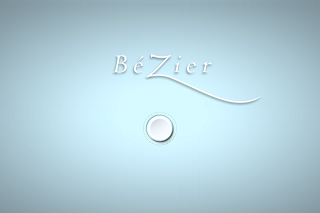Fold by Ricardo Moura is a well executed and original puzzle game, with a colorful presentation and smooth animations.
The playing area contains stripes of colored blocks. When you tap the last block of a stripe, the stripe starts shortening until it becomes only one block long.
Some blocks of different colors are connected together. When you fold one of these blocks, they pull the others with them. In the example below, tapping the yellow block will bring the three red blocks over to the left, joining the other red blocks.
The goal of each level is to end with only single blocks. To get a gold medal, there must be exactly one block of each color.
Other elements include blocks which expand instead of folding:
Grey blocks which become the color of the neighboring blocks when they are all of the same color:
And the dreaded black blocks which make all the blocks inside their area of influence become black.
The game contains 30 puzzles playable for free, and 30 more unlockable with a single in-app purchase. Most of the puzzles are easy and overall they are repetitive, not offering much of a challenge.
The only a-ha moment I had was with this puzzle:
There are two grey blocks here, that have to be turned into a single color. For example you can tap the left red block, which will make the red stripe fold to the right, turning the left grey block into green. But then what about the right grey block? Red has become a single block after the fold, so you can't move it anymore. You can tap the blue blocks above and below the gray block: this will turn it into a red block and you can finish the level, but you won't get a gold medal because you'll end with two blue blocks.
So how to get a gold medal? The solution is cunningly disguised inside the game mechanics. I won't ruin the enjoyment of discovering it yourself.
Fold is one of the most original puzzle games I've seen in some time. I just wish the puzzles were a bit more creative and required more thought. As they are, they feel a bit flat and buying the additional puzzles just offers more of the same stuff. Do try the free puzzles, however.
Update Aug 11th 2013: also see my Second Look to learn about a secret world with extra, harder, puzzles.
©2013 Nicola Salmoria. Unauthorized use and/or duplication without express and written permission is strictly prohibited. Excerpts and links may be used, provided that full and clear credit is given to Nicola Salmoria and nontrivialgames.blogspot.com with appropriate and specific direction to the original content.
The playing area contains stripes of colored blocks. When you tap the last block of a stripe, the stripe starts shortening until it becomes only one block long.
Some blocks of different colors are connected together. When you fold one of these blocks, they pull the others with them. In the example below, tapping the yellow block will bring the three red blocks over to the left, joining the other red blocks.
The goal of each level is to end with only single blocks. To get a gold medal, there must be exactly one block of each color.
Other elements include blocks which expand instead of folding:
Grey blocks which become the color of the neighboring blocks when they are all of the same color:
And the dreaded black blocks which make all the blocks inside their area of influence become black.
The game contains 30 puzzles playable for free, and 30 more unlockable with a single in-app purchase. Most of the puzzles are easy and overall they are repetitive, not offering much of a challenge.
The only a-ha moment I had was with this puzzle:
There are two grey blocks here, that have to be turned into a single color. For example you can tap the left red block, which will make the red stripe fold to the right, turning the left grey block into green. But then what about the right grey block? Red has become a single block after the fold, so you can't move it anymore. You can tap the blue blocks above and below the gray block: this will turn it into a red block and you can finish the level, but you won't get a gold medal because you'll end with two blue blocks.
So how to get a gold medal? The solution is cunningly disguised inside the game mechanics. I won't ruin the enjoyment of discovering it yourself.
Fold is one of the most original puzzle games I've seen in some time. I just wish the puzzles were a bit more creative and required more thought. As they are, they feel a bit flat and buying the additional puzzles just offers more of the same stuff. Do try the free puzzles, however.
Update Aug 11th 2013: also see my Second Look to learn about a secret world with extra, harder, puzzles.
Summary
| Nontrivialness | ★★☆☆☆ |
| Logical Reasoning | ★★☆☆☆ |
| User Interface | ★★★☆☆ |
| Presentation | ★★★☆☆ |
| Loading Time | ★★★★☆ |
| Saves Partial Progress | ✘ |
| Status Bar | ✘ |
©2013 Nicola Salmoria. Unauthorized use and/or duplication without express and written permission is strictly prohibited. Excerpts and links may be used, provided that full and clear credit is given to Nicola Salmoria and nontrivialgames.blogspot.com with appropriate and specific direction to the original content.





























